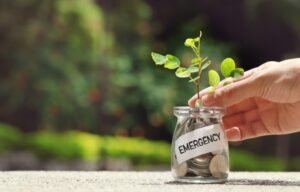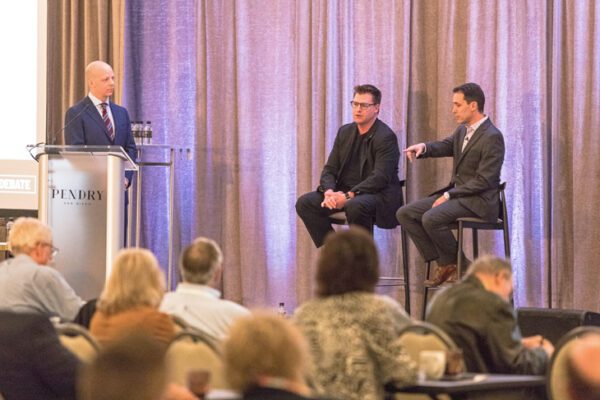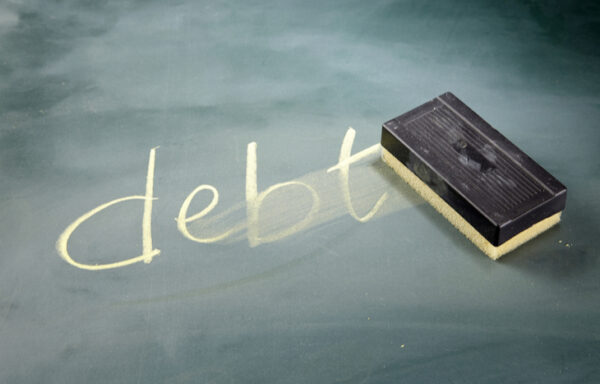How to Build an Emergency Fund
This guest post has been written by our friend Melissa Brock over at Benzinga, where you can find reviews for many financial products that could help you secure your financial future. In the following article, Melissa explains all the steps you should be taking to learn how to build an emergency fund and why it’s so important to do so. By the time you finish reading, you’ll know exactly what to do.
In your heart of hearts, you know you need an emergency fund. But how do you build one? How do you save for it? What is it, really?
We’ll supply some great tips for building an emergency fund from the ground up. Follow our lead and we’ll help you get started.

The Basics of an Emergency Fund
First things first: What’s an emergency fund?
An emergency fund is money you’ve set aside for life’s unexpected events.
You want an emergency fund because you don’t know what’s going to happen to you (where’s that crystal ball when you need it?). You can’t predict when your car will decide it needs a new engine or your air conditioner conks out in the middle of an August heat wave.
You need a buffer between you and the crazy ups and downs of life (if COVID-19 taught us anything…). Here’s what you need to know about building an emergency fund.
How Much Should You Have?
First of all, do you have debt? If you do, it’s a good idea to start by building a $1,000 emergency fund first. Once you’re out of debt, you can build more money into your emergency fund. Ideally, it’s a good idea to have three to six months of expenses in your emergency fund account.
If you can build up more, that’s even better.
Where Should it Go?
Great question. Your first thought might be to stuff it all into a savings account. That way, you can easily access your cash when you need to. This is called liquidity.
You can put your money in a few different types of accounts. Check out the quick rundown:
- High-yield savings account: When you’re looking for a deposit account through an online savings account or a brick-and-mortar institution, you might land on a high-yield savings account. High-yield savings accounts typically pay a higher interest rate than traditional savings accounts and almost always offer a better interest rate return than a checking account.
- Money market account: A money market account is a savings account with some checking features. You can get checks or a debit card, which allows a limited number of transactions each month. Money market accounts usually offer higher interest rates than regular savings accounts. (However, these days, they offer about the same rates as savings accounts.)
- Certificate of deposit (CD): A certificate of deposit (CD) is a savings account that holds a fixed amount of money for a fixed period of time — six months, one year, five years or more — and in exchange, the issuing bank pays you interest. The downside to choosing this option is that your money is locked up for that specified amount of time.
How to Build One
When you’re ready to build an emergency fund, you want to take action right now. You don’t want to wait forever. Luckily, it doesn’t take long to get this process underway.
Step 1: Figure out where you want to stuff your money.
First things first. Determine where you want your money to go. Whether you want to go for a money market fund, a CD or a high-yield savings account, choose one option. Avoid rolling your money up and putting it behind the cookie jar because there’s potential to earn a bit of interest on your savings!
Step 2: Determine a goal.
How much money do you want to put in your emergency fund? Despite the fact that you now know $1,000 should go into that fund, can you actually make that happen?
Can you scrape together an extra $200 a month for five months? Eliminate your daily Starbucks run and extra large milkshake habit from the local sandwich shop? Nix a splurge on new shoes or two new outfits? Go out to eat one day less every week?
Doing just one of these things adds up to $200 — maybe more. Add $200 over five months and you can squish $1,000 together quickly. Keep track of how much you save over that amount of time. It’s fun!
Step 3: Make it automatic.
The secret to successfully putting money away is to make it automatic. That way, you don’t think about the money that gets taken out of your account. Furthermore, automating your savings can help you get to your goal more quickly. It’s ideal because instead of waiting to put money into your savings until after you pay your bills every month, you save your money before you can spend it. You can set it up so it goes into a savings account right after you get paid.
It’s easy to set up regular deposits or transfers into your savings account:
- Use direct deposit. Most direct deposit programs allow you to split your paycheck so a portion goes directly into your savings account.
- Schedule automatic transfers. Do you have a lot of money built up in your checking account? Make automatic transfers happen once per month.
It really is easy to see big savings over time. Give it a try and watch your savings pile up.
Step 4: Assess your progress.
How well have you saved along the way? For example, how much money have you saved over the course of a few weeks? Are you meeting your goals? If you can predict what will happen with that amount, will it make a difference?
What will you do if you go over your emergency fund amount you had in mind? You could put the extra money somewhere else, like a college fund for your kids or a retirement fund.
If you do put that extra money into an account that doesn’t offer a lot of liquidity, like a retirement fund, understand the difference between highly liquid funds and funds that offer low liquidity. For example, you don’t want to put your emergency fund money in a retirement fund where you’d have to pay penalties if you took money out early.
Step 5: Only use the money for a true emergency.
This is so key, and here are a number of ways you may want to use your emergency fund:
- Sudden job loss: You may not get a severance bonus in the event of a sudden job loss. Paying bills could quickly become impossible after you suddenly lose your job. An emergency fund can cover some expenses while you look for and find another job.
- Medical emergencies: Nobody wants to face a true medical emergency, but if you need to fund an emergency room visit or trips back and forth to a faraway hospital, an emergency fund can help you meet necessary expenses.
- Acts of nature: Natural disasters happen, so first, make sure you have the right insurance coverage, especially if you live in a hurricane-prone area. The reason you need great insurance coupled with your emergency fund is that your emergency fund probably won’t cover the entire cost to rebuild your house but it could fund hotel stays, travel or other emergency expenses due to weather disasters.
- Car accidents: Contrary to popular belief, insurance doesn’t cover everything. You’ll also need to pay a deductible, so that will help you in the meantime. Your emergency fund may also cover the cost if you have to buy a new car as well.
- Tax bills: Ugh. What happens when the IRS comes roaming around? You can usually arrange a payment plan with the IRS, but an emergency fund can help cover it.
- Payroll lapses: Working for a startup or a nonprofit that’s barely squeaking by? You might need to cover a couple of weeks’ gap in pay.
- Moving expenses: Do you plan to move? Your new employer or current employer may not pay your moving expenses, especially if you’re just moving across town.
- Home repairs: It’s the worst when your dishwasher starts leaking, your oven quits working or your dryer completely bites the dirt. While you might already have money budgeted for regular upkeep, you may not expect major appliances to stop working. An emergency fund can save your home life.
On the flip side, check out the list of non-emergencies:
- Clothes and shoes
- A new car (when your old car works just fine)
- Toys (boats, RVs, motorcycles, four-wheelers)
- House down payment
- Startup business funds
- Vacations
- Keeping up with the Joneses
Get an Emergency Fund Going Now
When you do encounter an emergency, take a look at the situation as objectively as you can so you can determine whether it really is an emergency. For example, maybe your air conditioner going out in June isn’t such a big deal if you live in Alaska. Maybe a car breaking down isn’t the end of the world if you live in a big city, work from home and can take public transportation. (You can always wash dishes by hand, but that might feel like an emergency if you have seven kids.)
One person’s emergency isn’t the same as someone else’s.
Remember this: It could take time to build your emergency fund but it’s one of the most important tenets of building wealth. Even if it takes you months and you can only save a few dollars a week, it’s okay. As long as you actually do the work — one dollar at a time — you’re in good shape.
[adzerk-get-ad zone="245143" size="4"]About Melissa Brock
Melissa Brock is a 12-year veteran of college admission, founder of College Money Tips and Money editor at Benzinga. She loves helping families navigate their finances and the college search process. Check out her essential timeline and checklist for the college search!





